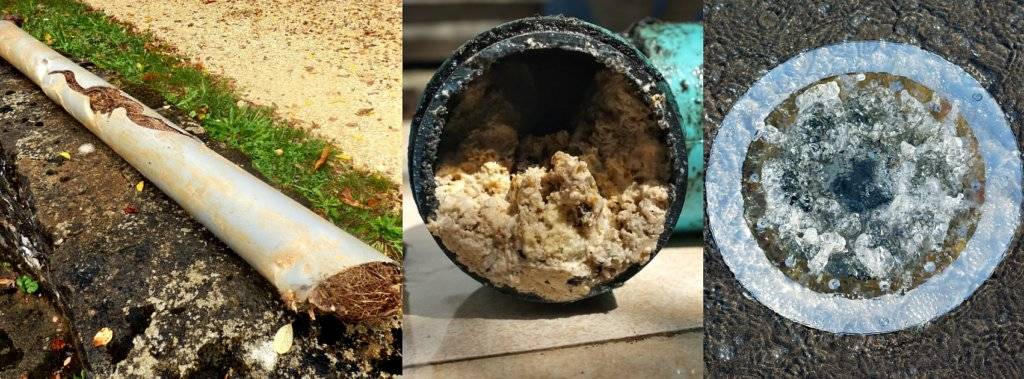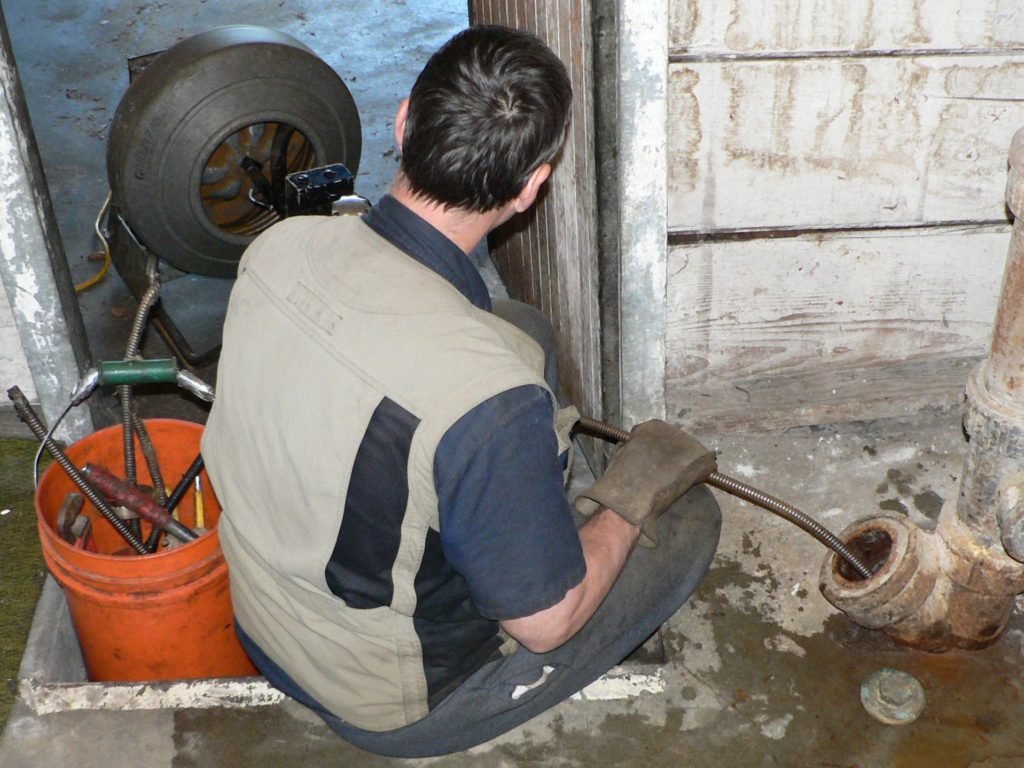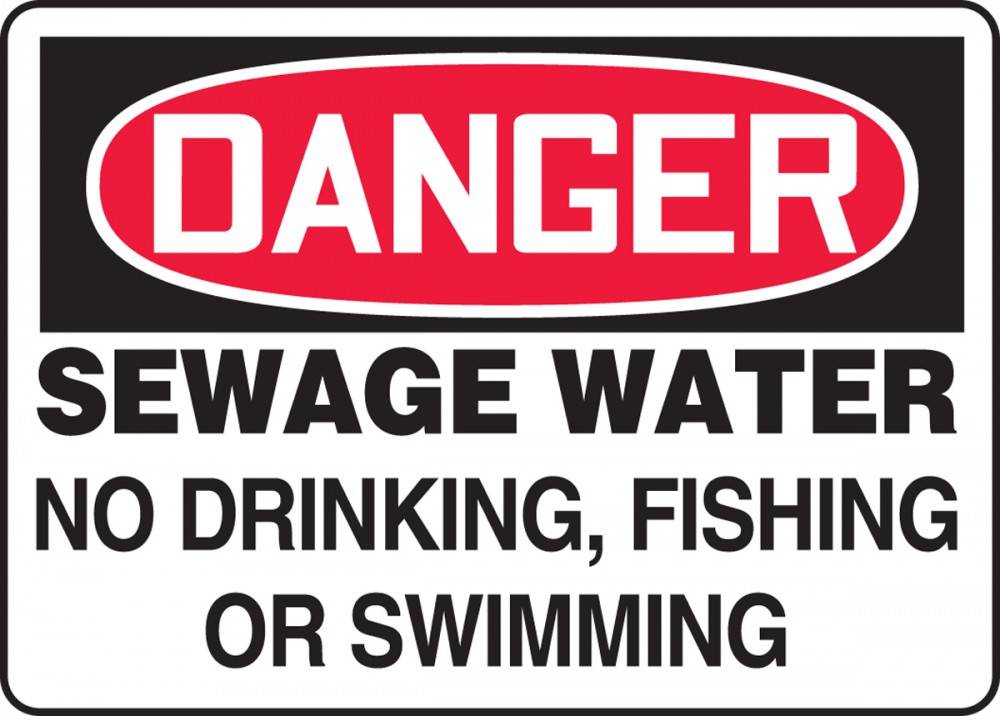Sewage backups in basements can occur when sewer lines become obstructed by debris, such as roots, rocks, etc., the flow of wastewater becomes blocked. As a result, the thick, black sewage water from this obstruction presents a serious health hazard. If you have a sewage backup in your basement, it is important to know what causes them so that you can prevent and handle them properly.
What Are The Top Causes of Sewage Backups in Basements?

Before we go any further make sure you do these 5 things immediately if you have a sewage backup in your basement. They are:
- Turn off the electricity in the area flooded.
- Turn off the water supply line.
- Equip protective gear such as a facemask, rubber gloves, and boots especially if you have to walk through sewage water.
- Stop using your toilets, washing machines, and sinks. This is to prevent the toilet overflowing and reduce further sewer backup.
- Get Help.

Sewage backups are most often caused by some form of obstruction, be that within the public sewer system or obstructions in your own basement floor drain. These obstructions include:
Clogs: these include hair, grease, or any other solid material that ends up in the drains. Sewage backs up into your home when one two things happens:
- Clogged home drain pipes.
- Clogged main sewer line.
If only your toilet creates a sewage overflow, it’s a sign of clogged home drain pipes but if all toilets or bathtub create sewage overflows, then there may be clogs in the main sewer line, or even a failed sewer pump.
Roots: Some trees can grow really long roots. These roots can get intertwined with your sewer line. They can grow into a pipe causing holes or crush the sewer pipe by growing around it. If roots from nearby trees reach your sewer line, they can damage it.
Damaged Sewer Line: Cast iron and clay pipes are no longer used for plumbing. Instead, plastic pipe is used. These pipes do not last as long as cast iron and clay pipes. As they age, they may crack and leak. Sewer systems can also break down and crack, resulting in sewage backups and flooded basements.
Heavy Rainfall: Large amounts of rain can overwhelm your city’s sewage system. If this happens, the water can flow into other sewer lines and create a sewage backup. This could cause problems if the water flows into your home’s plumbing.
How do you Clear a Basement Drain Backup?

There are several ways to remove a sewage backup. You should call an expert plumber who has experience dealing with sewers before attempting to fix the issue yourself. Here are some tips on clearing a sewage backup:
White vinegar: White vinegar is often known as the bane of clogged drains, and for good reason. White vinegar is incredibly good at melting organic debris and other materials within a clogged drain pipe. Pour this down the clogged drain and let the vinegar work its magic. Pouring boiling hot water down the drain is also a good call.
Plumbing Snake: This isn’t what it sounds like, you won’t be letting a snake loose down the sewer – not just yet. A plumbing snake is simply a flexible tube which allows you to clean out blocked drains without having to dig them out. It works much better than using a plunger because it doesn’t require pressure. Simply insert the end of the snake into the blockage and pull it along until it reaches the bottom of the drain. Then use the snake to push everything else away so you can see where the blockage begins.
If these methods are unable to fix the sewage backup in the basement by yourself, then you need to call a professional licensed plumber. Sewage problems are unlikely to resolve themselves and may even get worse. So make sure you call as soon as possible to fix any sewer clog in your drain!
How Do I Prevent Sewage Backups in my Basement?
Like many home problems, prevention is the key in the first place. Here’s a few things you can do to prevent sewage backups and excess water in your basement:
Install a backwater prevention valve: This fixture allows sewage to leave, but prevents it from backing into your home. Backflow preventers are usually installed into a sewer line or drain line in the basement, and sometimes into the drain pipe in basements.
Sewage pump maintenance: Make sure your sump pump does not sit on debris such as sand or gravel, which can be sucked up into the motor, causing damage. Place it on a steady flat surface. Also, ensure the basin has a filter fabric surrounding it to prevent debris from entering.
Say no to grease going down your drain: Cooking oil hardens within the pipes. Over time, it stops debris from draining, causing a clog. To dispose of grease or fat in a proper manner, pour it into a suitable container and throw it away when it cools down.
Correct disposal of paper products: Flushing hygiene products such as toilet paper, diapers, or feminine products down the toilet can cause serious problems. To avoid this problem, you should dispose of them in the trash only.
Install a new plastic pipe or cut tree roots: To prevent tree roots from damaging the sewer lateral, replace it with a new plastic pipeline. If tree roots continue to grow in the sewer lateral, cut them periodically.
What Health Risks do Sewage Backups Pose?

When there’s an overflow of sewage water in the basement, it poses health risks that include exposure to bacteria, viruses, parasites, chemicals, heavy metals, and more. These substances pose threats to human health if they enter our bodies through skin contact, ingestion, inhalation, or eye contact. Some of the health issues include:
- Heliobacter Pylori: causes increased risk of developing ulcers.
- Leptospirosis: causes vomiting and muscle soreness.
- Acanthamoeba: causes throat, nose, and eye infections.
- Various Coli: causes diarrhea, abdominal cramps, and potentially death.
Hepatitis A: causes jaundice, nausea, fever, fatigue, loss of appetite, and stomach pain.
How Much Will it Cost me?
To put it simply the longer you leave it the more it will cost you. A sewage backup left untreated could lead to mold growth, rot, mildew, and bacteria that can spread throughout your house. The costs associated with repairing a sewage backup include cleaning chemicals, labor charges, replacement parts, and repairs. You might have to pay an additional fee if there’s flooding involved. In some cases, homeowners insurance companies cover sewage backup repair expenses. However, they don’t always offer full coverage. For example, most homeowner insurance policies exclude flood damages.
The services of a qualified professional plumber will usually cost between $200 to $400, but if there are damaged pipes they will need to be replaced, if this is the case the cost could increase into the thousands.
If however you want to try some DIY solutions before calling a plumber, it will cost you less than $100, depending on the quantity of products you will use.
